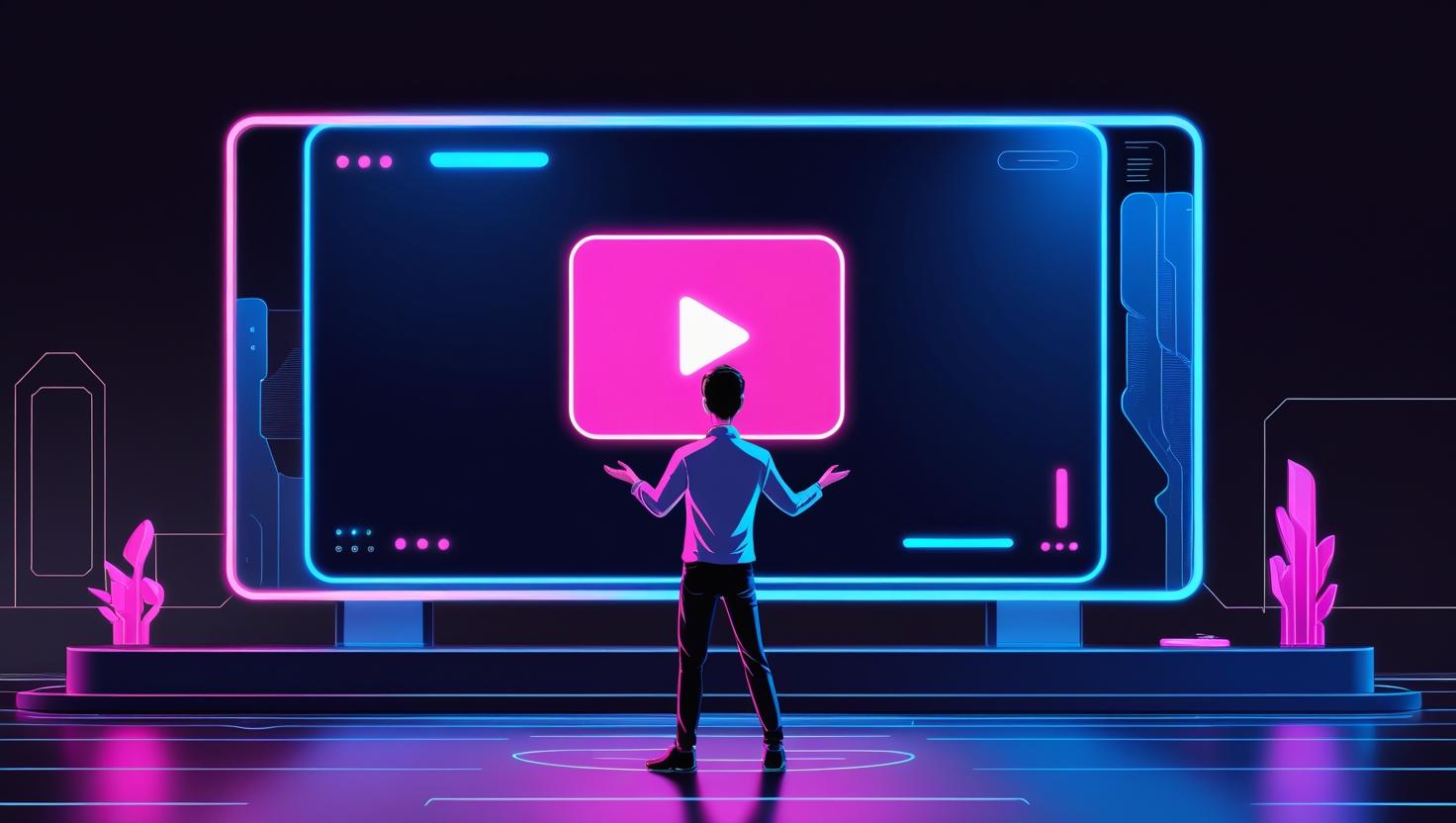Demo Video vs Explainer Video: Which One Wins This Year?









Demo Video vs Explainer Video: The Only Guide You’ll Ever Need to Read
Let’s settle the demo video vs explainer video debate once and for all. If you’re a founder, marketer, or PM staring at a budget line item for “video,” you’ve probably asked yourself: “Do I need a slick 60-second explainer or a scroll-stopping product demo?” The short answer: it depends on where your prospect is in the funnel. The long answer? Well, that’s why this article exists—so you don’t blow $10k on the wrong type and end up with a beautiful video that nobody watches.
1. What Is a Demo Video? (A.K.A. “Show, Don’t Tell”)
A demo video is the extrovert of the video world: it jumps straight into your product, clicks every button, and shows off the goods in real time. Think of it as the digital version of the old Apple keynotes where Steve Jobs would slide an iPod out of his pocket and make the crowd gasp.
Key Characteristics
- Length: 1–5 minutes (sweet spot is 90 seconds)
- Goal: Drive activation, reduce time-to-value, or close a prospect
- Audience: Leads in the decision stage, existing users, or trial users
- Style: Screen-record walkthrough, live action with product close-ups, or polished UI animation
Typical Use Cases
✅ Onboarding sequences inside your SaaS
✅ “Request a demo” follow-ups for enterprise leads
✅ Sales enablement for SDRs (Dropbox has a killer library of these)
✅ YouTube pre-roll ads for bottom-funnel keywords like “best CRM for agencies”
Real-World Example
Notion’s 2-minute “Getting Started” video walks new users through building their first page. It’s pure product porn—no fluff, just clicks, templates, and instant gratification.
2. What Is an Explainer Video? (A.K.A. “Hook, Story, Close”)
An explainer video is your elevator pitch in motion. Instead of deep-diving into features, it zooms out to the why behind your product. You’ll usually spot 2D characters, metaphors, and a friendly voiceover that sounds like your favorite barista explaining blockchain over coffee.
Key Characteristics
- Length: 30–90 seconds
- Goal: Spark awareness, clarify the problem, and position your solution
- Audience: Cold traffic, top-of-funnel leads, investors at Demo Day
- Style: 2D animation, motion graphics, whiteboard, or even kinetic typography
Typical Use Cases
✅ Homepage hero section (hello, Flowjam clients)
✅ Cold outreach emails (“Watch this 60-sec clip to see how we cut AWS costs by 34%”)
✅ Social ads on LinkedIn or Twitter with captions for the scrollers
✅ Trade-show booth loops (because nobody reads flyers anymore)
Real-World Example
Dollar Shave Club’s 90-second launch video is the gold standard: problem (overpriced razors), solution ($1 blades), personality (enough to fill a tank). It racked up 27M views and a $1B exit—talk about ROI.
3. Demo Video vs Explainer Video: Side-by-Side Smackdown
Demo videos are designed to show how a product works, making them ideal for the decision or retention stages of the funnel. They typically run 1 to 5 minutes, with scripts focused on features and use cases, using screen recordings or live UI visuals. Common calls to action include “Start trial” or “Book demo”, and they’re best hosted on YouTube playlists, in-app, or in sales decks. Budgets usually range from $3k to $15k, depending on polish.
In contrast, explainer videos focus on why a product matters, targeting the awareness and consideration stages. They’re shorter—30 to 90 seconds—and aim to highlight pain points and value propositions, using 2D animation and metaphors for visual storytelling. CTAs like “Learn more” or “Sign up” work well, and these videos are often placed on homepages, ads, or in email signatures, with a typical budget of $2k to $10k, depending on animation complexity.
Pro tip: If your prospect still asks, “What does your product do?”—you need an explainer. If they’re asking, “How do I do X in your product?”—roll the demo.
4. When to Use Which: A Choose-Your-Own-Adventure
Choose a Demo Video If…
✅ You’re post-PMF and optimizing onboarding (looking at you, YC SaaS startups)
✅ Your sales cycle involves procurement teams who demand feature parity tables
✅ You just shipped a shiny new dashboard and churn is spiking because nobody uses it
Choose an Explainer Video If…
✅ You’re pre-launch and validating your SaaS MVP (check out our pre-launch marketing tactics)
✅ Your homepage bounce rate is north of 60% and visitors still think you’re a marketplace (true story)
✅ You’re raising a seed round and need VCs to get it in the first 30 seconds of your pitch deck
Pro Move: Use Both in Tandem
Drop the explainer at the top of your funnel (cold ads, Product Hunt launch), then retarget warm leads with a demo video. It’s peanut butter and jelly—except the sandwich is your MRR.
5. Benefits Breakdown (Because Bullet Points Are Fun)
Benefits of Demo Videos
✅ Reduces support tickets by up to 30% (per Zendesk benchmarks)
✅ Shortens sales cycles—HubSpot reports demos can 3× close rates
✅ Boosts activation—Notion’s 2-min tour lifted day-7 retention by 15%
Benefits of Explainer Videos
✅ Increases landing-page conversions by an average of 80% (Unbounce study)
✅ Improves ad recall—viewers retain 95% of a message vs 10% from text (Insivia)
✅ Makes complex ideas snackable—perfect for AI or Web3 startups with 10-slide whitepapers nobody reads
6. How to Create Videos That Don’t Suck
For Demo Videos
✅ Script the “aha” moment first—hook viewers in the first 15 seconds
✅ Zoom & highlight—use cursor tracking so viewers never lose the plot
✅ Add chapter markers—YouTube timestamps help skippers find value fast
✅ Record lossless—720p screen capture screams 2010; go 1080p minimum
✅ Include captions—85% of social videos are watched on mute(Facebook data)
For Explainer Videos
✅ Start with the pain—agitate the problem harder than Twitter agitates opinions
✅ One core message—if you have three value props, make three videos
✅ Use brand colors—consistent palettes lift brand recall by 23% (Lucidpress)
✅ End with a single CTA—“Book a demo” beats “Follow us on TikTok, Instagram, and MySpace”
✅ Optimize the thumbnail—a smiling face + bold text = CTR magic
Common Mistakes to Avoid
❌ Feature vomiting—nobody cares about your 47 integrations in a 60-second explainer
❌ Skipping subtitles—your video is useless in a noisy coworking space
❌ Generic stock music—unless you want viewers to confuse you with a mattress ad
❌ No mobile preview—if text is unreadable on 5-inch screens, you’re toast
7. FAQ: Quick-Fire Answers to Questions You’re Too Afraid to Ask
Q1. Can I mash both styles into one Frankenstein video?
Sure, but you’ll confuse viewers. Treat them like Netflix genres—rom-com or horror, not both.
Q2. How much should I budget for a 90-second explainer?
Plan for $3k–$10k depending on animation complexity. If you need it yesterday, add a 50% rush fee or check Flowjam’s pricing.
Q3. Do I need a voiceover artist with a British accent?
Only if your ICP is Downton Abbey fans. Otherwise, match accent to audience (US, APAC, etc.).
Q4. Can I update the video later when we rebrand?
Animated explainers are modular—swap colors or UI screenshots easily. Live-action demos? Not so much.
Q5. What metrics should I track?
For demos: activation rate, feature adoption, trial-to-paid. For explainers: view-through rate, CTR, cost per signup.
8. TL;DR (a.k.a. The Mic-Drop Moment)
- Explainer videos = top-of-funnel hype machines.
- Demo videos = bottom-of-funnel closers.
- Use both, but never at the same time.
- Budget 2–6 weeks for production and iterate like your growth depends on it—because it does.
Still stuck? Book a free 15-min consult with Adam at Flowjam and we’ll roast your current video strategy (nicely).
Ready to turn theory into ARR?
Grab your coffee, smash that “Order Yours” button on Flowjam.com, and let’s craft a launch video that makes competitors sweat.

Got Questions?
We've Got Answers.
What's your email?
Need to email us? Send emails to adam@flowjam.com
What's the process?
Once you place your order, you'll be directed to a short form where you provide key details about your product and vision.
As soon as we receive it, we start writing the script—typically crafting 2-3 versions in different tones for you to choose from.
Within 1-2 days, we’ll send the script for your approval. Once approved, we move on to the storyboard, ensuring every scene aligns with your vision before we begin animation.
When the final video is ready, you get unlimited revisions to make sure it’s exactly what you want.
How does the turnaround time work?
We pride ourselves on fast delivery without sacrificing quality.
Unlike agencies that drag projects out for months, we work efficiently to get your video done in weeks.
If there are any unexpected delays, we’ll keep you informed every step of the way.
How many rounds of revisions are included?
All revisions are unlimited—we don’t stop until you’re 100% happy with the final video.
Who owns the rights?
You do. Unlike some agencies that charge extra for licensing, everything we create is yours to use however you want, with no hidden fees.
How do I get started?
You can purchase and start the process directly from our website.
Click the purchase button, fill out the form with your project details, and complete the payment.
If you have any questions before getting started, feel free to book a call.
Can I get a refund?
We do not offer refunds due to the creative nature of this service. All customers have a chance to review and agree to our Service Agreement prior to engaging with us. We offer unlimited revisions so we will work on the video as much as it needs until you love it!
What makes your launch videos different?
We focus on story-driven, high-converting videos that don’t just explain your software—they build hype and increase conversions. Our streamlined process delivers agency-quality videos without the bloated costs or long timelines.
Can you help with scriptwriting if I don’t know what I want?
Absolutely. We don’t expect you to have everything figured out—that’s our job. Our team will craft multiple script options based on your product and audience, ensuring the final video feels on-brand and compelling.
Do you offer voiceover and music?
Yes, every video includes a professional voiceover and background music at no additional cost. We work with a range of voice actors to match your brand’s tone.
What if I need the video faster?
If you’re on a tight deadline, let us know. We offer rush delivery options, depending on our current workload.





